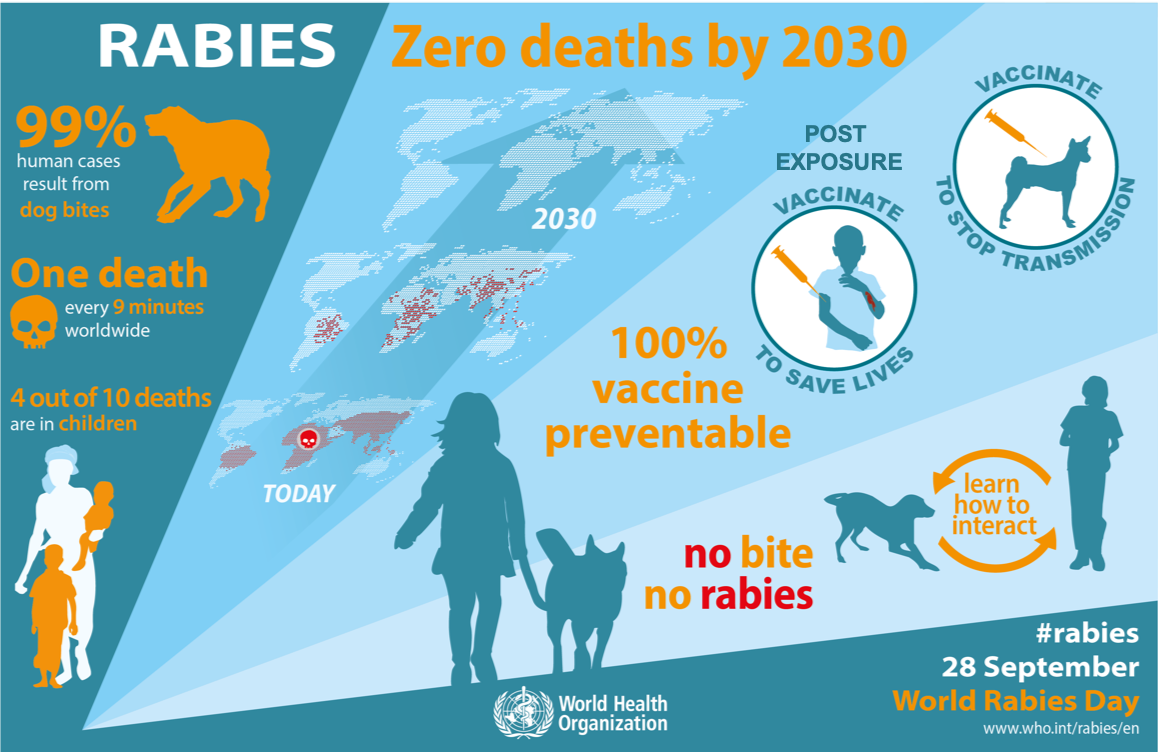World Rabies Day - September 28
Rabies and One Health
By Dr. Janine Seetahal, KSVDL Rabies Section Head

One heath is an intersectoral approach to health that recognizes the interconnectivity between people, animals and their shared environment. It is not a new concept but it is being brought to light with ever increasing frequency as societies progress and modern threats arise due to climate change, deforestation, human encroachment into wild animal habitats and expanded international movement due to globalization of trade. Zoonotic diseases are infectious diseases transmitted between humans and animals, and these can emerge at the human-animal-environment interface causing conflicts. Rabies is one of the oldest and most dramatic zoonotic diseases known to man. The virus has evolved alongside with human civilizations from ancient Mesoptamia to the present era. Over time viral spill over and species adaptation propagated by anthropogenic induced ecological disruption resulted in the emergence of rabies virus in new animal reservoirs and geographical areas with disease manifestation across a wide species range. For instance, European colonization led to the introduction of rabid dogs to the Americas with subsequent spillover of canine rabies into mongoose populations after they were brought to the West Indies from Asia. Another example is the effect of importation of domestic livestock to establish food productions systems upon colonization of the Americas. This resulted in disturbance of vampire bat population ecology and spillover of bat rabies into both human and animal populations.
Rabies control programs exemplify One Health in action and show that zoonotic diseases can be effectively managed by a One Health Approach. The best illustration of this is the Zero by 30: Global Strategic Plan which targets the elimination of dog-mediated human rabies by 2030, supported by the World Health Organization (WHO), the World Organization for Animal Health (OIE), the Food and Agriculture Organization of the United Nations (FAO) and the Global Alliance for Rabies Control (GARC). Interventions that have proven to be effective towards this goal include: increasing disease awareness at the level of the community and policy makers; integrated surveillance in animal and human populations; increased accessibility of rabies post-exposure prophylaxis and mass vaccination in dog populations. The COVID-19 pandemic has affected rabies control programs on many levels from delays in animal vaccinations programs to hesitancy towards post-exposure prophylaxis but we still persevere towards the Zero by 30 goals.
It is anticipated that with the control of canine transmitted rabies across the globe the epidemiological importance of known wildlife reservoirs (e.g. mongoose and bats) will increase and or new wild animal reservoirs of rabies will emerge. As we have noted from history, wildlife rabies is more likely to emerge in areas where there has been an imbalance in ecosystem health, which often results from anthropogenic influences.
In the United States rabies vaccination campaigns implemented in the 1980s caused significant gains in reducing companion animal rabies. More than 90% of rabies cases since this time are now in wildlife species. Rabies is endemic within all states in the continental United States with the main wildlife reservoirs being bats, raccoons, skunks and foxes. Bat exposures are presently the leading cause of human rabies in the USA and account for 70% of human rabies infections. From Sept to Nov 2021 alone there were three cases of bat-associated human rabies deaths in the United States.
